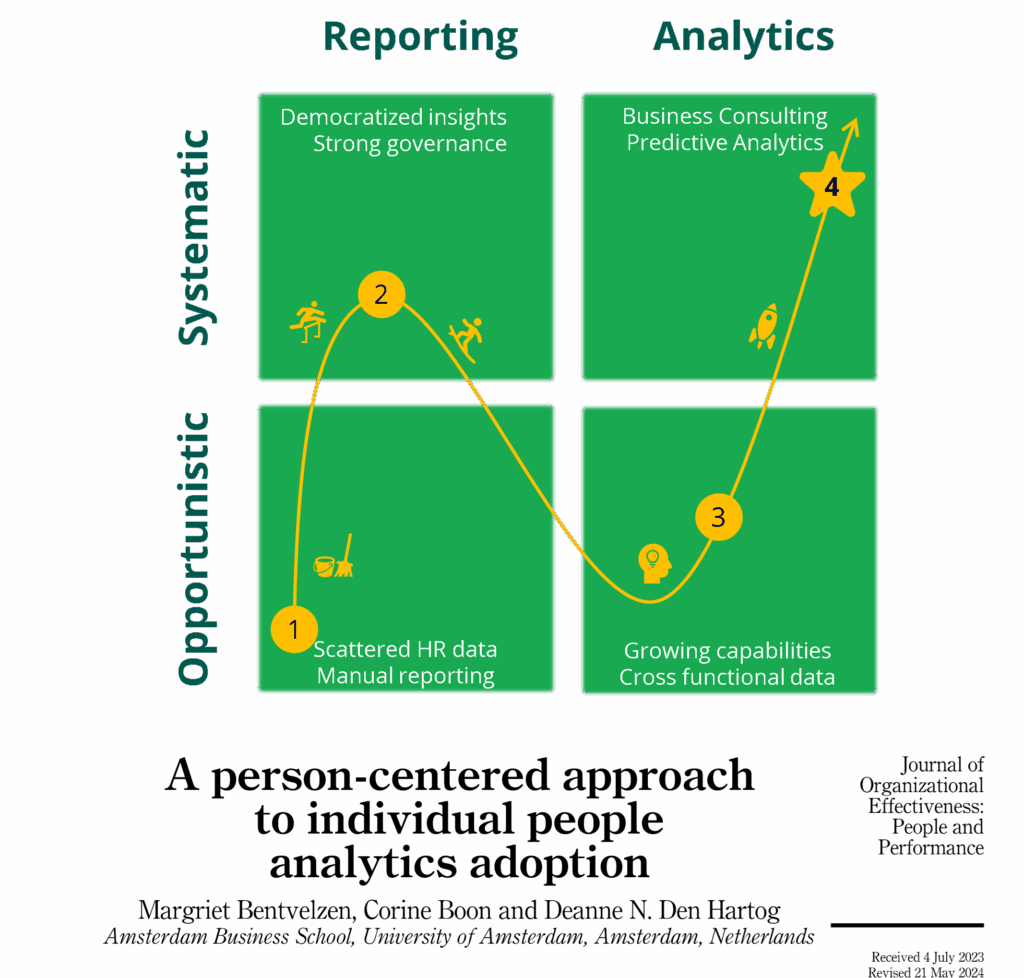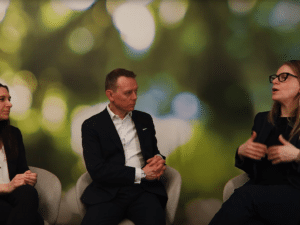People analytics in action: insights from our recent roundtable

Last month, Nick Arnold, Head of Reward, HR Tech and Analytics, and Anton Blades, Principal Consultant, hosted a high-impact roundtable in London, in collaboration with Crunchr, bringing together HR leaders, people analytics professionals and industry experts from across sectors including technology, legal, energy, gaming, insurance, financial services and FMCG. Despite the diversity of industries represented, there was a striking level of agreement on the challenges, opportunities and future direction of the people analytics world.
The session featured keynote insights and open discussion, with a focus on what it really takes to build strong foundations in people analytics, overcome barriers to adoption and drive data-driven decision-making across the HR function.
- Understanding the people analytics maturity journey
- Building HR data literacy and culture
- Empowering HR Business Partners
- The evolving role of people analytics professionals
- Managing tools, dashboards and expectations
- Investing in people analytics tools
- AI ethics and responsible use
- Balancing stakeholder needs
- Conclusion
Understanding the people analytics maturity journey
A key theme of the session was understanding where organisations sit on the people analytics maturity model. Created by Crunchr from years of research, it is widely used across the industry and in academic settings, helping organisations assess their current state and plan for future growth.
The four stages of maturity include:
- Opportunistic reporting: basic, reactive reporting by a single HRIS or BI specialist. Inconsistent people data and definitions limit trust and scalability.
- Systematic reporting: a small HR analytics team manages structured dashboards using HR tech. Usability and data security become key challenges.
- Opportunistic analytics: teams begin integrating business and HR data, using correlation analysis and early predictive modelling to deliver actionable insights.
- Systematic analytics: advanced organisations use forecasting and predictive analytics to drive strategic workforce planning and business success.

Most businesses are still operating in the first two stages, often believing they are further along than they are. Progressing through the model requires investment in HR technology, upskilling and a shift in mindset. Understanding your maturity level helps prioritise the right tools, methodologies and stakeholders.
Building HR data literacy and culture
One of the most consistent takeaways was the importance of building foundational data literacy across the organisation. Many businesses are still in the early stages of data discovery, identifying where HR data has been hiding and surfacing it in meaningful ways.
Stakeholders increasingly want insight-focused summaries rather than data volume. They want to know who the top performers are, whether they’re engaged, how compensation compares and where the risks lie in terms of attrition and retention. This shift requires a culture that values clarity over complexity and prioritises employee experience and well-being alongside business performance.
Moving away from siloed data access, where only the CEO or a small group of executives request reports, toward broader organisational fluency is essential. Finance, HR business partners and other functions must be empowered to engage with people data confidently and responsibly.
Empowering HR Business Partners
HR Business Partners (HRBPs) are central to the success of any people analytics strategy. However, they are often time-poor, under pressure and expected to deliver insights with limited support. The roundtable highlighted the need to upskill HRBPs so they can confidently interpret and defend data in senior leadership meetings.
When HRBPs lack confidence in the data or how to present it, they are less likely to pursue data-driven approaches. Supporting them means teaching how to challenge questionable data, interpret uncertainty and frame insights appropriately. The goal is to elevate HRBPs to the same level of trust and influence as finance business partners.
Board-level packs containing HR data are often too sparse. More robust, insight-led content is needed to support strategic conversations and influence business strategy.
The evolving role of people analytics professionals
The role of the people analytics practitioner is evolving. As technology and AI continue to advance, the need for deep technical skills is gradually being replaced by the need for strong storytelling and stakeholder engagement. Professionals in this space must focus on developing soft skills alongside data literacy: being able to present insights clearly, challenge assumptions and influence decisions. HR data and people technology remain high priorities for HR and business leaders, and data literacy is increasingly becoming a prerequisite for hiring senior HR professionals. However, data is still too often used to justify decisions already made, rather than to guide them. Finance teams continue to hold more sway in boardrooms, partly due to their confidence in presenting metrics. People analytics teams must learn to match that clarity and conviction.
Managing tools, dashboards and expectations
Dashboard fatigue is real. Many organisations have invested in static dashboards that are rarely used or quickly become outdated. Stakeholders want dynamic, live dashboards that surface only the most pressing issues, that require immediate attention or action.
With HRBPs often supporting large populations (e.g., 1:50 ratios), it is unrealistic to expect them to drive all insight generation. Data democratisation must extend beyond HRBP teams, enabling managers and other stakeholders to access relevant, real-time insights independently.
Working with third-party providers can also help. External partners offer a level of objectivity and plausible deniability that can be useful when driving initiatives that may face internal resistance. They also bring cutting-edge tools and methodologies that can accelerate progress.
Investing in people analytics tools

One of the practical considerations discussed was whether to invest in a people analytics tool early on or build a solution in-house. While building internally may seem appealing, it often requires significant resource from tech teams, something they may be reluctant to commit. Being aware of this dynamic is essential when building a business case. Early investment in scalable tools can help HR teams avoid bottlenecks and focus on delivering value. The right solution should support automation, reduce manual reporting and enable faster access to data-driven insights.
AI ethics and responsible use
Artificial intelligence in HR remains a complex and evolving space. While there is excitement about AI-powered tools, there is also concern about inconsistent results, ethical risks and inappropriate use cases.
Different models can yield different outcomes across stakeholder groups, especially in early testing phases. There is an urgent need to educate teams (particularly in talent management and recruitment) about responsible data handling. This includes the risks of copying sensitive data into AI tools without safeguards.
Some participants raised concerns about using artificial intelligence to write performance goals, questioning whether such sensitive tasks should be automated at all. The consensus was clear: AI should support, not replace, human judgement. Automation must be applied thoughtfully, with clear governance and ethical boundaries.
Balancing stakeholder needs
Executive teams may open budgets for data projects, but without HRBP engagement, these initiatives risk falling flat. There is a delicate balance between satisfying board-level demands and protecting the workload and well-being of a stretched HRBP population.
Ultimately, people analytics must serve both strategic and operational needs. It must support human capital decisions, improve employee experience and deliver measurable value to the business. CHROs and senior directors play a key role in championing this shift, but they must also invest in closing skill gaps and building confidence across the wider human resources team.
Conclusion
Alongside valuable networking opportunities, the roundtable offered clear, real-world insights for HR professionals navigating the future of work. As organisations face increasing complexity, the ability to harness HR data for workforce planning, employee engagement and strategic decision-making will define the next generation of HR leaders.
By following a structured maturity model, investing in the right partnerships and fostering a culture of data-driven insights, HR teams can move from reporting to real impact. The future of people analytics is not just about tools. It is about influence, insight and action.
For more updates, case studies and insights from our events, follow us on LinkedIn.



